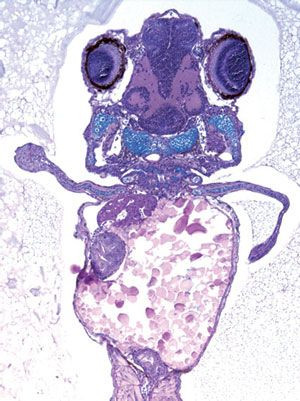Scientists Make Fish Grow "Hands" in Experiment That May Reveal How Fins Became Limbs

Scientists have successfully made fish grow "hands" instead of fins in an experiment that may reveal how animals transitioned to living on land instead of only in water.
While fossils have long shown that limbs evolved from fins, scientists from the latest study said they have shown live in the laboratory how the transition may have happened.
Researchers said that the new study published in the journal Developmental Cell offers new evidence revealing that the development of hands and feet occurred through the acquisition of new DNA elements capable of activating specific genes.
To understand how fins may have evolved into limbs, a team of scientists led by Dr. José Luis Gómez-Skarmeta at the CSIC-Universidad Pablo de Olavide-Junta de Andalucía, in Seville, Spain, and his colleague Dr. Fernando Casares injected zebrafish with the hoxd13 gene from a mouse.
Researchers said that the hoxd13 gene, known to play a role in distinguishing body parts, codes for a protein that controls the development of autopods, a precursor to hands and feet and paws.
While the zebrafish naturally carries Hoxd13, it produces less of the protein than tetrapods, four-limbed vertebrates that include amphibians, reptiles, birds, and mammals.
Researchers hope that by introducing extra copies of the gene into the zebrafish embryos, some of their cells would make more of the protein.
Surprisingly, researchers found that injecting copies of the gene, led to the generation of new cartilage tissue and the reduction of fin tissue. Researchers explained that a full 24 hours after extra copies of the gene were introduced to the embryos, fish whose cells had taken up the gene began developing autopods instead of fins. While they maintained growing for four days, they later died.
"Of course, we haven't been able to grow hands," Casares told New Scientists, he believes that hundreds of millions of years ago, the ancestors of tetrapods for some inexplicable reason began expressing more hoxd13. He says that the greater expression of the gene could have allowed fish to evolve autopods.
"We found that in the zebrafish, the mouse Hoxd13 control element was capable of driving gene expression in the distal fin rudiment," Casares said in a statement. "This result indicates that molecular machinery capable of activating this control element was also present in the last common ancestor of finned and legged animals and is proven by its remnants in zebrafish," he explained.
Researchers said that the latest finding suggests that changes in HoxD13 production may have contributed to the evolution from fin to leg development in animal evolution.
They say that the recent study helps clarify how changes in gene expression shape the body and why many genetic diseases are associated with "misshaping" of organs during development.
"In the case of genes involved in limb formation, their abnormal function is associated with diseases such as synpolydactyly and hand-foot-genital syndrome," Gómez-Skarmeta explained in a statement.
Published by Medicaldaily.com



























